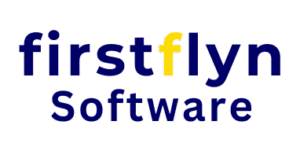Introduction
In today’s digital age, content marketing is more than just a buzzword—it’s a critical strategy for businesses aiming to engage their audience and drive conversions. By crafting and sharing valuable, relevant content, brands can not only attract prospects but also transform them into loyal customers. In this article, we delve into the most effective content marketing strategies designed to engage your audience and convert them into advocates of your brand.
Understanding Your Audience: The Foundation of Content Marketing
To create content that resonates, it’s essential to have a deep understanding of your target audience. Knowing their pain points, interests, and preferences allows you to tailor your messaging effectively. Start by creating buyer personas—fictional representations of your ideal customers based on real data and market research. These personas should guide all your content decisions, ensuring that each piece of content speaks directly to your audience’s needs.
Why Audience Segmentation Matters
Audience segmentation is the process of dividing your broader audience into smaller, more defined groups. This approach allows for more targeted content, leading to higher engagement rates. By segmenting your audience based on demographics, behavior, or psychographics, you can create content that feels personalized and relevant to each group.
Creating High-Quality Content: The Key to Engagement
Once you understand your audience, the next step is creating high-quality content. High-quality content is not only well-written and informative but also original, valuable, and optimized for search engines. This type of content positions your brand as a thought leader in your industry, building trust and credibility with your audience.
Types of Content That Drive Engagement
- Blog Posts: Well-researched and insightful blog posts are the backbone of any content marketing strategy. They help answer your audience’s questions and provide solutions to their problems.
- Infographics: Visual content like infographics can simplify complex information, making it easier for your audience to digest and share.
- Videos: Video content is becoming increasingly popular and is an excellent way to engage your audience. Whether it’s a product demonstration, tutorial, or behind-the-scenes look at your company, videos can capture attention quickly.
- eBooks and Whitepapers: These long-form content pieces are great for offering in-depth information on a topic, often used as lead magnets to collect email addresses.
- Case Studies: Showcasing real-life success stories through case studies can demonstrate the effectiveness of your products or services, providing social proof to potential customers.
SEO Optimization: Making Your Content Discoverable
Creating great content is only half the battle; ensuring it’s discoverable by your target audience is equally important. This is where Search Engine Optimization (SEO) comes in. By optimizing your content for relevant keywords, you increase the chances of your content appearing in search engine results pages (SERPs), driving organic traffic to your site.
On-Page SEO Techniques
- Keyword Research: Identify the keywords your audience is searching for and incorporate them naturally into your content.
- Meta Descriptions and Title Tags: These elements play a crucial role in how search engines interpret your content. Ensure your meta descriptions and title tags are compelling and include your target keywords.
- Internal Linking: Linking to other relevant content on your site helps search engines understand the structure of your website and keeps visitors engaged for longer periods.
- Mobile Optimization: With more people accessing content via mobile devices, it’s essential that your content is mobile-friendly, ensuring a seamless user experience across all devices.
Content Distribution: Amplifying Your Reach
Creating content is just the beginning; distributing it effectively is what amplifies your reach and maximizes engagement. Leverage multiple channels to get your content in front of as many eyes as possible.
Social Media Marketing
Social media platforms are powerful tools for content distribution. Whether it’s Facebook, Instagram, LinkedIn, or Twitter, each platform has its unique audience and best practices. Share your content regularly and engage with your audience to foster a community around your brand.
Email Marketing
Email marketing remains one of the most effective channels for content distribution. By building a list of subscribers and sending them regular, valuable content, you can nurture leads and keep your brand top of mind.
Collaborations and Guest Blogging
Partnering with influencers, industry leaders, or other brands for collaborations or guest blogging can help you tap into new audiences and enhance your brand’s credibility.
Measuring Success: Analyzing and Refining Your Strategy
The final piece of the content marketing puzzle is measuring success. Use tools like Google Analytics, social media insights, and email marketing reports to track the performance of your content. Metrics such as page views, time on site, bounce rate, and conversion rate will give you a clear picture of what’s working and what needs improvement.
A/B Testing
A/B testing involves creating two versions of the same content with slight variations to see which performs better. This method allows you to make data-driven decisions that can significantly improve your content’s effectiveness.
Conclusion
Content marketing is a dynamic and multifaceted strategy that requires a deep understanding of your audience, high-quality content creation, and effective distribution. By focusing on these key areas, you can engage your audience and convert them into loyal customers, ultimately driving business growth.
